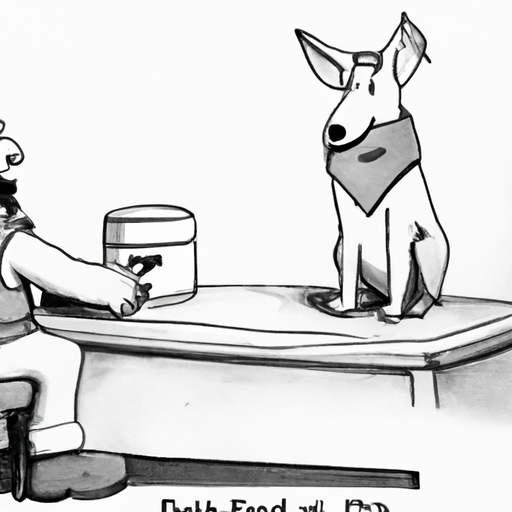1. Understanding the Situation
When you find your furry friend with an injured ear tip, don’t panic. Dogs, especially those with long, floppy ears, are prone to injuries in these areas. It could be a simple scratch or, in some cases, a more serious issue like a hematoma. As a caregiver, it is crucial to understand the situation before taking action.
2. Preparing for the Procedure
Before you start bandaging your dog’s ear, you need to have some essential items:
- Clean water
- Antiseptic solution
- Sterile cotton balls or pads
- Self-adhesive bandage
- A cone or e-collar
Make sure your work area is clean and well-lit. If possible, have someone else hold your dog while you work to keep them calm and steady.
3. Cleaning the Wound
The first step to bandaging your dog’s ear tip is cleaning the wound. Here’s how you can do it:
- Soak a cotton ball or pad in clean water and gently clean the wound.
- Pat the area dry with another clean cotton ball.
- Apply an antiseptic solution using a fresh cotton ball.
Remember, your goal is to prevent infection, so be thorough but gentle to avoid causing any additional pain.
4. Bandaging the Ear
Now that the wound is clean, you’re ready to bandage the ear.
- Cut a piece of the self-adhesive bandage long enough to wrap around your dog’s ear and head.
- Position the bandage at the base of the ear, making sure to cover the wound.
- Wrap the bandage around the ear and the head, ensuring that it is secure but not too tight.
Remember that bandaging should provide enough pressure to prevent bleeding but not so much that it is uncomfortable or restricts blood flow.
5. Aftercare and Monitoring
After bandaging the ear, your job isn’t over. You need to monitor your dog’s behavior and check the bandage regularly.
- Ensure your dog is comfortable and not scratching or shaking its head excessively.
- Check the bandage at least once a day for signs of infection, such as redness, swelling, or pus.
If your dog is agitated or the wound is not healing, seek veterinary attention immediately.
| Do’s | Don’ts |
|---|---|
| Clean the wound gently | Don’t ignore signs of infection |
| Keep the bandage secure | Don’t wrap the bandage too tightly |
| Monitor your dog’s behavior | Don’t let your dog scratch the wound |
Frequently Asked Questions
Q: How often should I change the bandage?
A: Ideally, change it once a day or if it gets wet or dirty.
Q: Can I use human bandages?
A: While possible, it’s best to use self-adhesive bandages designed for pets as they stick better and are safer.
Q: When should I seek veterinary attention?
A: If the wound is deep, your dog appears to be in pain, or there are signs of infection, contact your vet immediately.
As a caregiver, your dog relies on you for its well-being. Understanding how to properly bandage an ear tip can make a world of difference when injuries occur. Stay patient, calm, and remember, when in doubt, always seek professional advice.



